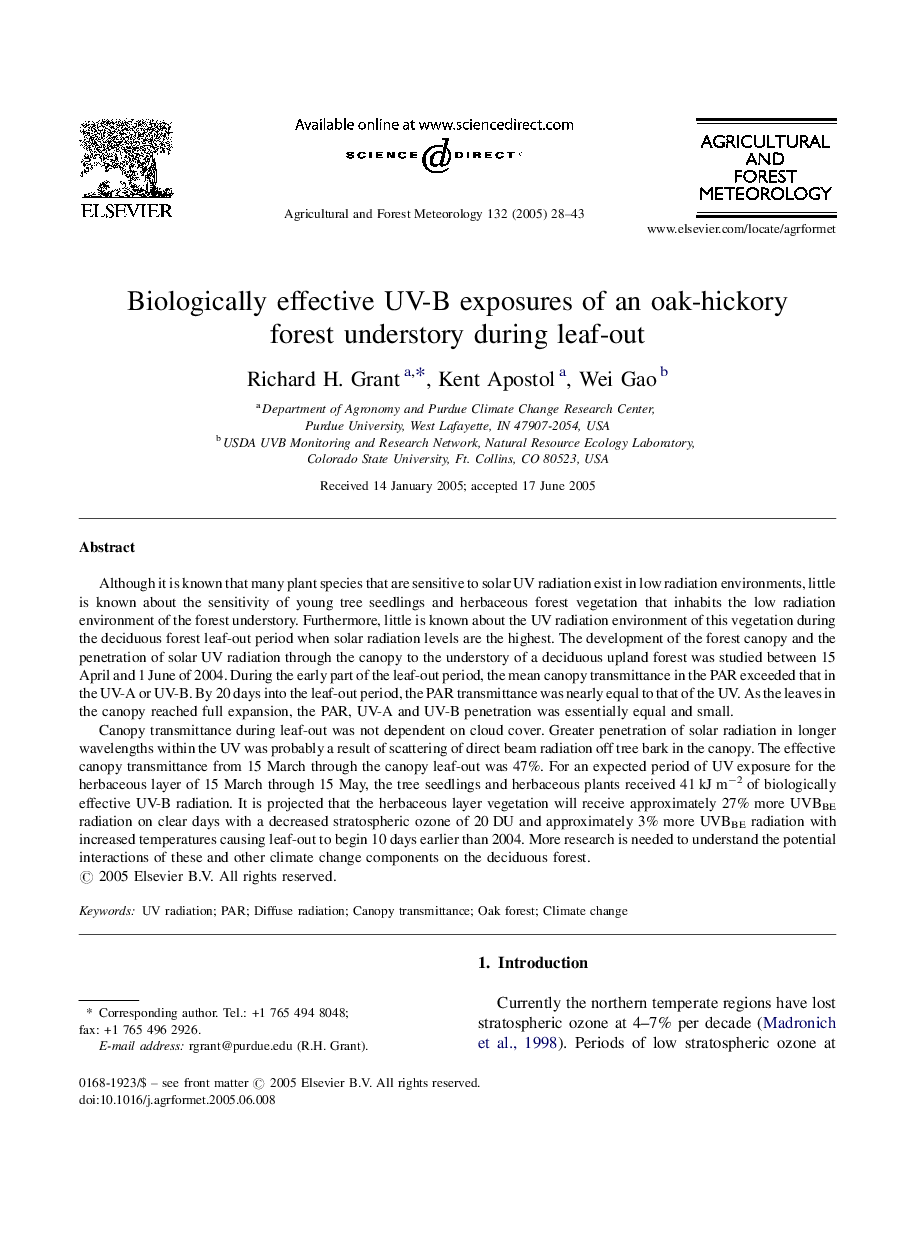| Article ID | Journal | Published Year | Pages | File Type |
|---|---|---|---|---|
| 9619460 | Agricultural and Forest Meteorology | 2005 | 16 Pages |
Abstract
Canopy transmittance during leaf-out was not dependent on cloud cover. Greater penetration of solar radiation in longer wavelengths within the UV was probably a result of scattering of direct beam radiation off tree bark in the canopy. The effective canopy transmittance from 15 March through the canopy leaf-out was 47%. For an expected period of UV exposure for the herbaceous layer of 15 March through 15 May, the tree seedlings and herbaceous plants received 41Â kJÂ mâ2 of biologically effective UV-B radiation. It is projected that the herbaceous layer vegetation will receive approximately 27% more UVBBE radiation on clear days with a decreased stratospheric ozone of 20Â DU and approximately 3% more UVBBE radiation with increased temperatures causing leaf-out to begin 10 days earlier than 2004. More research is needed to understand the potential interactions of these and other climate change components on the deciduous forest.
Related Topics
Physical Sciences and Engineering
Earth and Planetary Sciences
Atmospheric Science
Authors
Richard H. Grant, Kent Apostol, Wei Gao,
